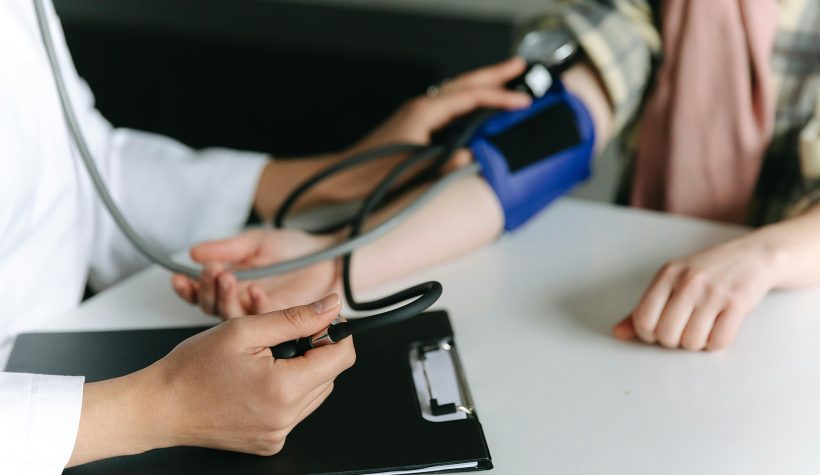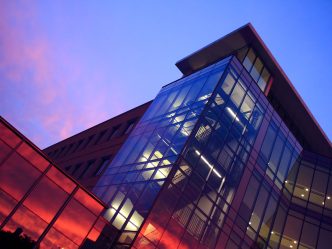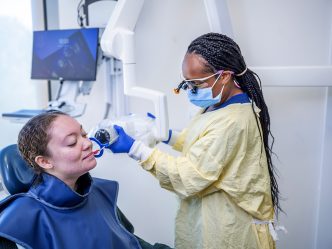The Dental College of Georgia (DCG) commends Dr. Mark Peacock, Professor in the Department of Periodontics, and Dr. Zachary Bradshaw, a third-year periodontics resident, for their swift and decisive actions in recognizing signs of a potential stroke in a female patient. Their quick thinking and adherence to emergency protocols ensured the patient received timely medical attention.
During a routine appointment, Dr. Bradshaw observed concerning symptoms in a patient, indicating a possible stroke. Within two minutes, he brought Dr. Peacock into the treatment room. Demonstrating exceptional professionalism and clinical acumen, the duo immediately initiated correct medical emergency procedures. Their prompt response ensured the patient’s stabilization and transport to a nearby hospital for critical treatment in less than 30 minutes.
“The appointment followed normal protocols,” Bradshaw said. Nothing stood out as a concern while taking the patient’s history and vitals. The department opted for local anesthesia to address the patient’s specific needs. But when the procedure was complete, the patient began to slur her words and struggle to speak.
Bradshaw immediately notified Peacock and began medical emergency protocols.
Dr. Peacock stated that while the periodontics clinic based the initial assessment on its judgment, he shares credit with the responding faculty and residents from the Department of Oral and Maxillofacial Surgery (OMS) for their rapid reaction. Although OMS does not officially participate in the emergency protocol, they respond when they can.
“I’ve worked with them on many emergencies over 13 years and they’re always spot on,” Peacock said. But the DCG’s medical emergency protocols proved the real saving grace. “Everything worked exactly as it should.”
The team later found out the patient’s CT scan was clear for signs of a stroke, and she even stopped by the next day. Bradshaw said he was glad he had the training to respond to the situation, including training during his orientation as a resident, during the sedation course, during the periodontics department’s medical emergency seminars, from literature available around the clinic, and through CPR training the college regularly offers.
Dr. Alan Furness, Associate Dean for Patient Services, agrees that the protocols the DCG has in place make an impact on patient outcomes in an emergency.
“This incident highlights the importance of comprehensive medical knowledge, even within specialized fields, and the critical role every healthcare provider plays in patient safety,” Furness said.
“I felt well-trained and prepared to know what to look for and to get the right people involved,” Bradshaw said. “I think the protocols were effective.”
Doctors ultimately examined and released the patient from the hospital without a stroke diagnosis. The DCG expresses gratitude for the acute awareness and rapid response of Dr. Peacock, Dr. Bradshaw and the OMS Department. This incident serves as a powerful reminder of how vigilance and preparedness in a clinical setting can have life-saving consequences.
Remember DCG Medical Emergency Protocol:
• Upon recognizing a problem, notify the nearest ranking faculty or administration member.
• Call 706-721-2222.
• Say, “Activate Code 66 in the dental college.”
• Provide your floor number, clinic or department name, and room number.
• Send an individual to retrieve the medical emergency cart (WHERE IS IT?).
• Call for an ambulance at 706-721-2911.
• Send an individual to the front of the building to direct the ambulance. Bring ambulance personnel to the freight elevators.
• Send an individual to commandeer the freight elevator entrance and escort EMTs to the location in the building.
• Maintain a timed log of events and report the emergency to the Office of the Associate Dean for Patient Services at 706-721-7019 and the DCG Dean’s Office at 706-721-9424.
 Augusta University
Augusta University



